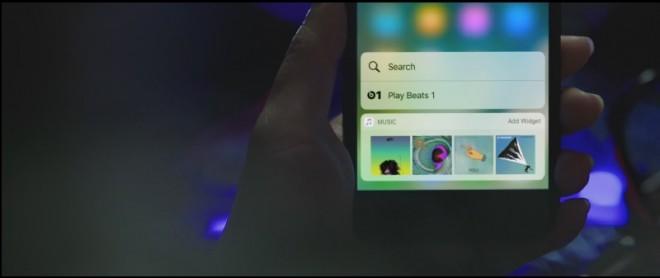
Apple's iPhone 7 was clearly a much-awaited smartphone of the year before its launch on Sept.7. This, considering the fact that Cupertino's new flagship is IP67, certified to offer both dust and water proofing capabilities. It also comes in a 256 GB variant.
Now, post the release of iPhone 7, various competing devices have emerged with the most talked-about handset in this category being the Samsung Galaxy S7, thereby triggering yet another Apple vs Samsung war outside of the patent battles.
Though not yet released commercially, the Apple iPhone 7 invariably draws comparisons with the Samsung galaxy S7 in keeping up with the battle of the technology giants' tradition. With this being the criteria, let us see how the Apple iPhone 7 and Samsung Galaxy S7 stack up against one another.
Apple iPhone 7 vs Samsung Galaxy S7
Display
The Apple iPhone 7 features a 4.7-inch display having resolutions of 750 x 1334 with pixel density of 326 pixels-per-inch (ppi). The touchscreen, here, is protected by an ion-strengthened glass with oleophobic coating.
On the other hand, the Samsung Galaxy S7 comes with a much larger 5.1-inch screen that has superior resolutions of 1440 x 2560 and pixel density of 577 ppi.
Both the new iPhone and the Galaxy S7 support multitouch and 16 M colours.
Head-to-head, the Samsung Galaxy S7 is the winner (on paper) considering its superior screen resolution and pixel density which helps generate a comparatively sharper image on the screen. However, the Apple iPhone 7 also tries its best with the Retina HD display but its undoing (theoretically) is its average 750 x 1334 resolution and the lower pixel density. Nonetheless, with its smaller 4.7-inch screen, first-time users should not be able to spot differences in the image display, when both the Galaxy S7 and the iPhone 7 are held side-by-side.
Hardware
In terms of hardware, Apple's iPhone 7 incorporates a quad-core CPU within its new Apple A10 Fusion SoC that works in tandem with a 2 GB RAM.
On the other hand, Samsung's Galaxy S7 offers users a Qualcomm Snapdragon 820 SoC (an Exynos 8890 variant is also available depending on geographies) that comprises two quad-core Kryo CPUs clocked at 2.15 GHz and a couple of 1.6 GHz quad-core Kryo CPUs.
Taking into account the above aspects, Apple's A10 Fusion chip emerges a winner theoretically considering the fact that the cores within this SoC are programmed to handle high-end tasks, whilst consuming comparatively lesser power. Even the hexa-core GPU within the Apple A10 Fusion is capable enough of letting users resort to performing graphic-intensive operations within their iPhones.
Nonetheless, the Samsung Galaxy S7's Qualcomm Snapdragon 820 is also no less when it comes to offering utmost computing capabilities (in a multitasking environment) to users.
As far as high-end gaming is concerned, both the Apple iPhone 7 and Samsung Galaxy S7 draw level with their 2 GB and 4 GB RAM offerings.
Memory
The Apple iPhone 7, once commercially released, will be available to buyers in 32/128/256 GB fixed internal storage variants.
In contrast, the Samsung Galaxy S7 is currently available in 32/64 GB internal storage editions. Users can expand the internal storage via an external microSD card up to 256 GB.
Camera
Apple's new iPhone, this time around, features a 12 MP rear camera with dual-tone LED flash, optical image stabilization (OIS) and autofocus.
With this camera, users can shoot 2160p videos at 30 frames-per-second (fps), 1080p videos at 30/60/120fps and 720p videos at 240fps.
The iPhone 7 also features a 7 MP front camera for HD calls. This snapper lets users capture 1080p videos at 30fps, 720p at 240fps and HDR videos.
Samsung's Galaxy S7 also offers its users a 12 MP primary camera with LED flash. There is also a 5 MP front snapper for video calls.
A stand-out aspect about the Galaxy S7's camera is its incorporation of Dual-Pixel technology which results in users getting to focus faster on objects, while capturing photos and recording videos.
Battery
Apple's iPhone 7 is driven by a fixed Lithium-Ion battery; Apple is yet to make the exact specifics of the battery clear at this point in time. However, Cupertino giant has stated that the iPhone 7 will offer two hours more talk-time than the iPhone 6S.
On the other hand, Samsung's Galaxy S7 incorporates a non-removable 3,000 mAh Li-Ion battery that is claimed to offer talk-time of up to 22 hours when connected to a HSPA network.
Software
The iPhone 7 runs Apple's newest iOS 10 operating platform straight out of the box. The smartphone also offers 3D Touch capabilities.
On the other hand, Samsung Galaxy S7 runs on Google's Android 6.0 (Marshmallow) operating platform. At this point in time, the eligibility of the smartphone to receive the newer Android 7.0 (Nougat) as an OS update is unknown.
Release date and price
Apple iPhone will be available for purchase through retail stores starting Sept.16, while its commercial release in India is rumoured to take place in October. In India, the iPhone 7 is expected to cost nearly INR 60,000 ($897).
In contrast, the Samsung Galaxy S7 is currently available for purchase; its average street price is INR 43,000 ($643).
Verdict
Though it's still early to pronounce a clear verdict, the iPhone 7 seems to theoretically have an advantage over the Galaxy S7 in terms of performance and multitasking (these parameters mostly define a smartphone) with its A10 Fusion processor. Price-wise, though, the Galaxy S7 has an edge.















